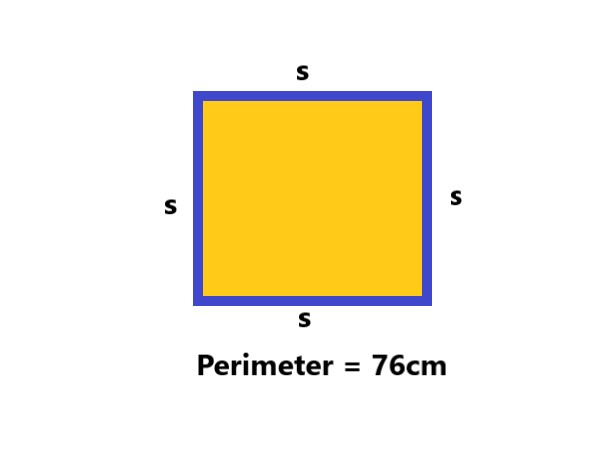Lesson Topics Discussion Quiz: Class Homework |
Example1 |
Title: Perimeter of Square |
Grade 6+ Lesson s1-l3 |
Explanation: The best way to understand geometry is by looking at some examples. Take turns and read each example for easy understanding. |
Examples
Topics → Definition Example1
The perimeter of a square is 76 cm. What will the new perimeter be if you reduce the side length by 4 cm?

Step: 1 |
|
The given value for the perimeter of a square (P) is 76 cm. |
|
Explanation: |
|
In this step, A square given perimeter (P) is 76 cm. The formula for the perimeter of a square is P = 4s. To find the length of one side of the square, we use the formula \$s = P/4\$. |
|
Step: 2 |
|
Substitute the values \$s = (76)/4\$ = 19. |
|
Explanation: |
|
Based on the calculation, the square’s side length is 19 cm. After reducing the side length by 4 cm, the new side length s_new is calculated as 15 cm from the original length of 19 cm. |
|
Step: 3 |
|
To find the new perimeter (P_new) using the same formula: |
|
Explanation: |
|
In this step, you can find the new perimeter, P_new, using the same formula: P_new = 4 S_new. Therefore, P_new = 4 × 15 = 60 cm. After reducing the side length of the square by 4 cm, the new perimeter is 60 cm. |
|
Copyright © 2020-2024 saibook.us Contact: info@saibook.org Version: 4.0 Built: 17-Sept-2025 12:00PM EST